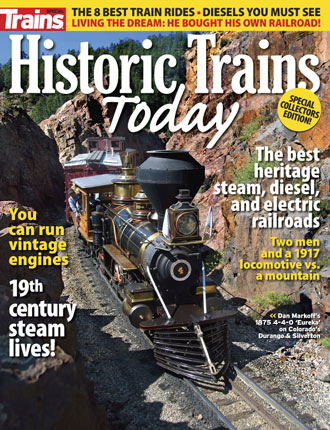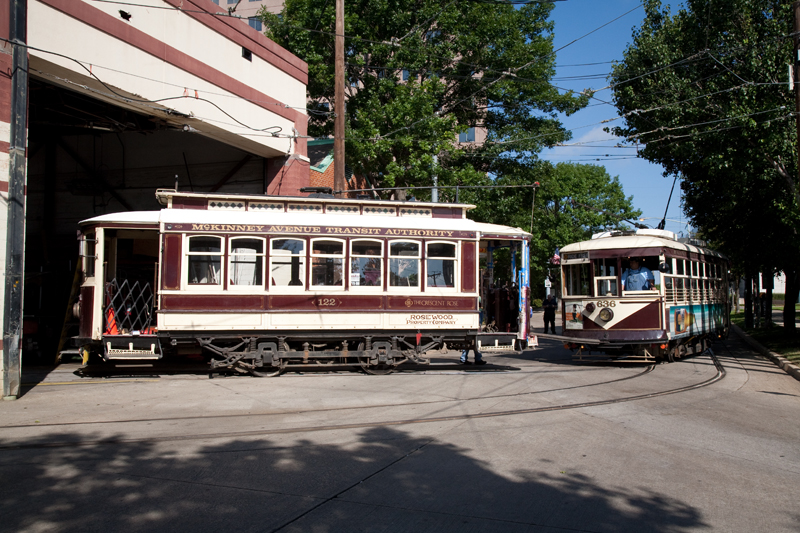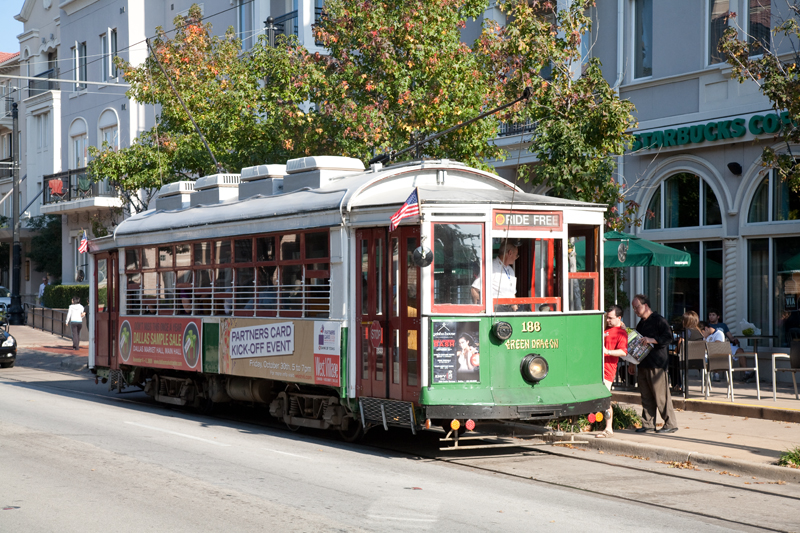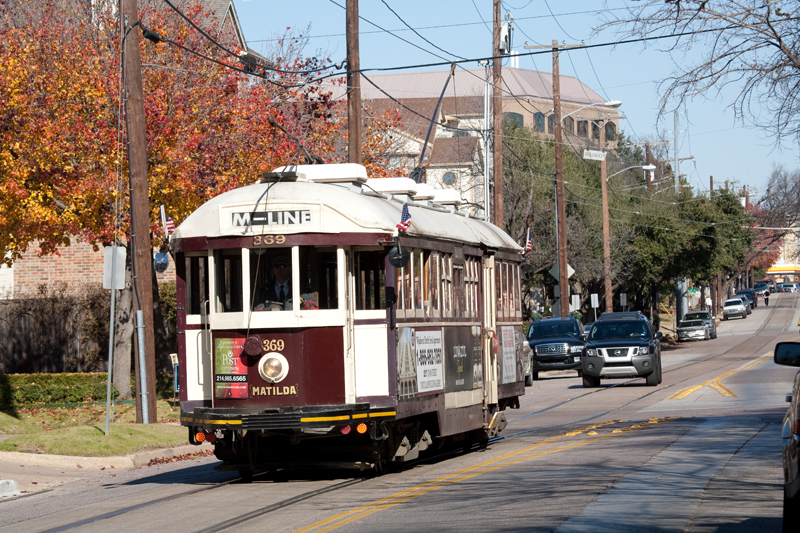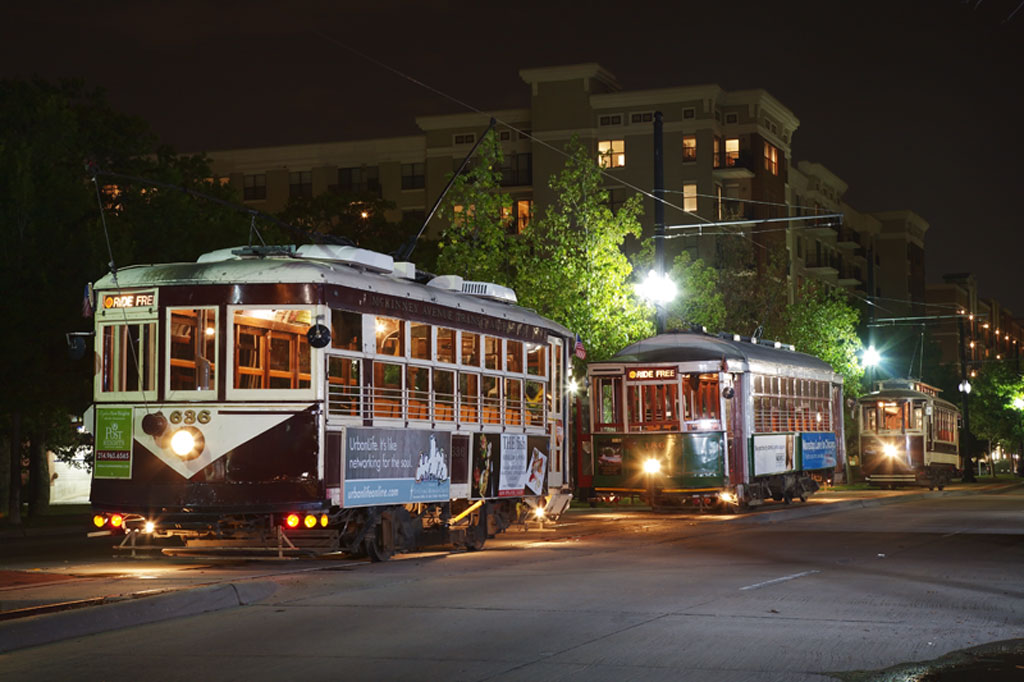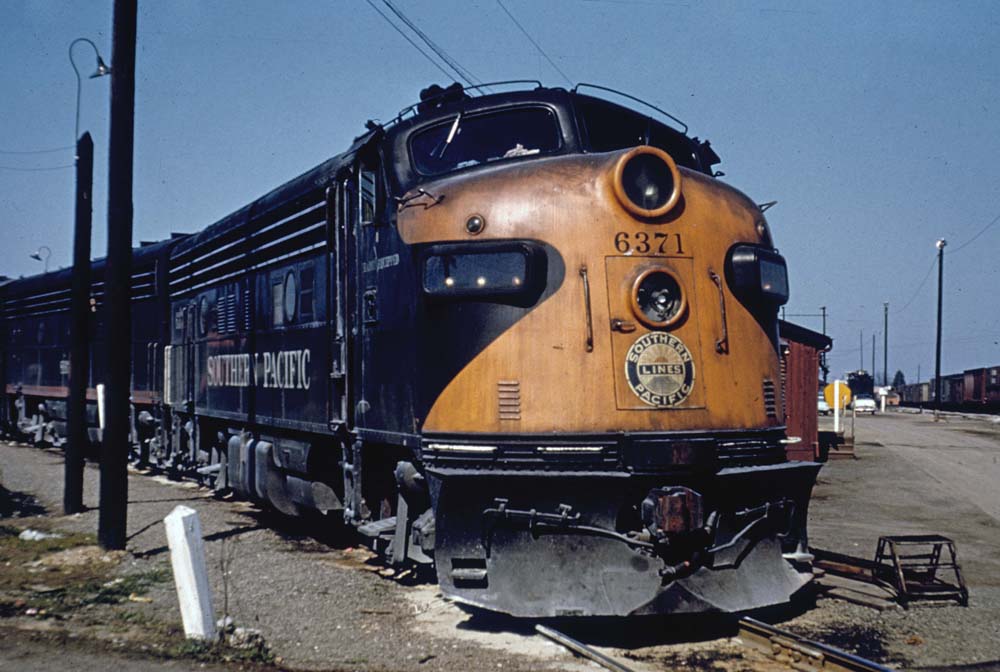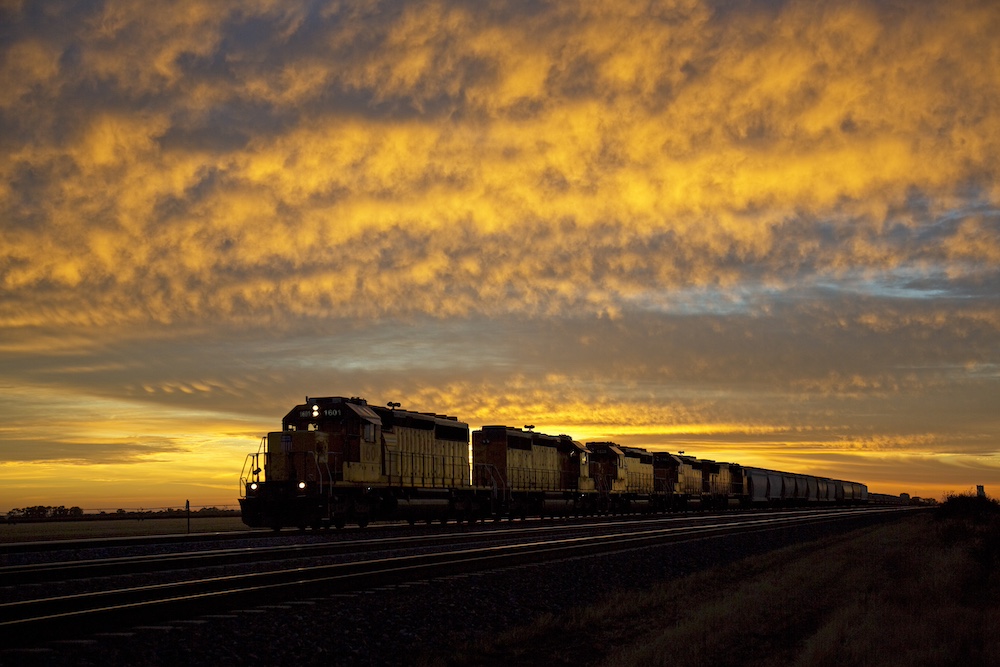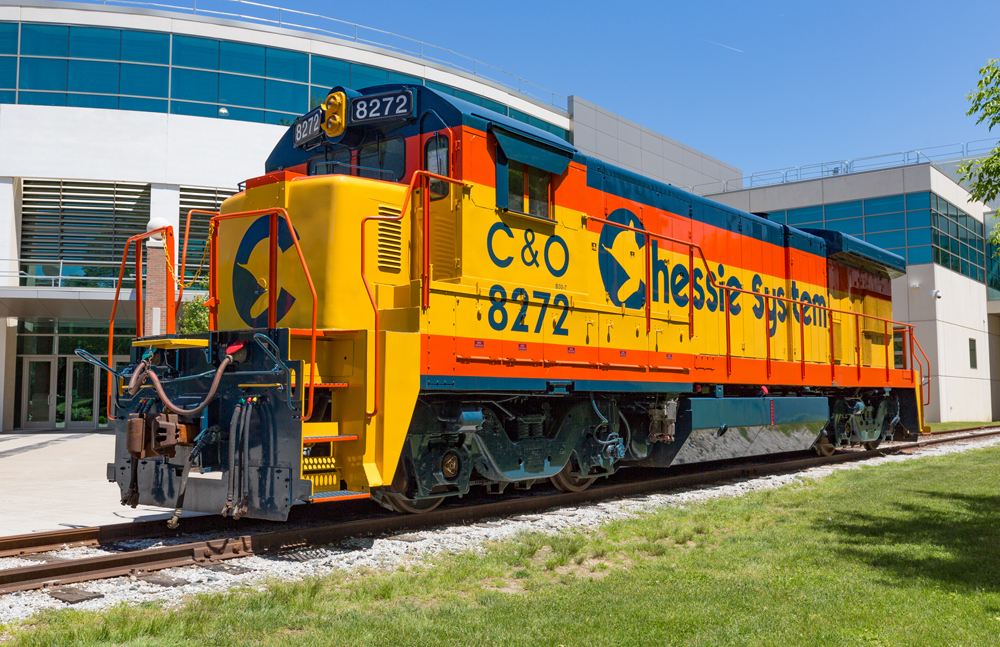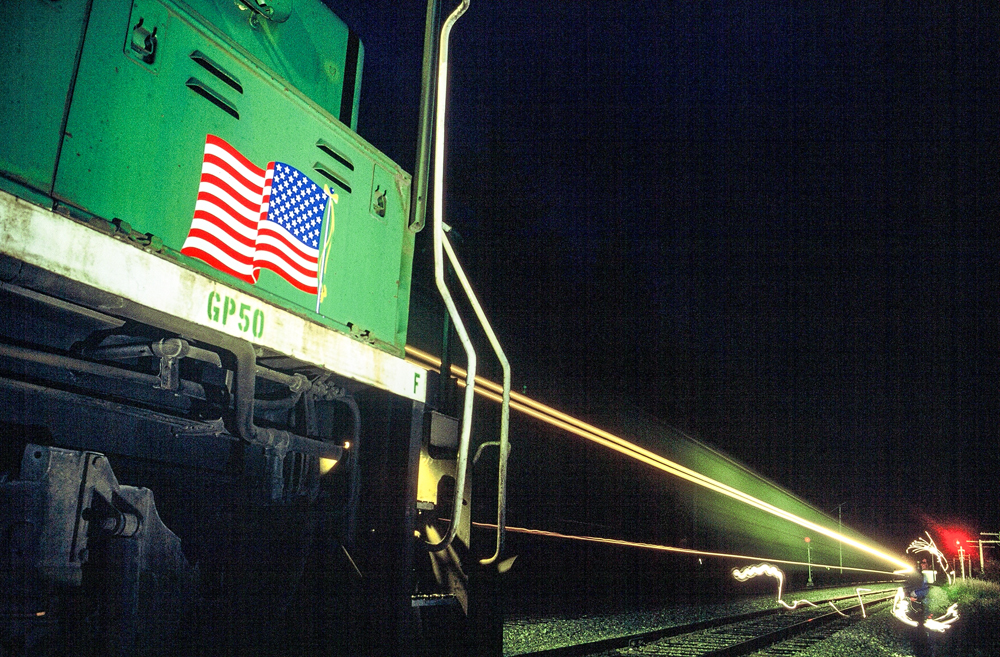The first car fully restored and used during the opening ceremony in 1889 was No. 122, which the J.G. Brill Co. in Philadelphia built in 1909 for the streetcar system in Porto, Portugal. The car is 28 feet long, weighs 14 tons, rides on a single Brill 21E truck with a 7-foot wheelbase and two 33-inch-diameter spoked wheels, and is powered by two 600-volt DC, 35-hp traction motors. MATA co-founder Phil Cobb saw the single-pole 122 operating at the San Francisco Trolley Fair. Because it is similar to early streetcars that once operated in Dallas, Cobb purchased it and moved it to Dallas. Rosewood Properties and the Crescent multi-business development sponsor Car 122, and named it the “Crescent Rose.” Operators shortened this to “Rosie,” which led to the rest of the fleet acquiring nicknames. Rosie celebrated its 100th birthday in 2009 and now runs primarily on charters and for special events.
St. Louis Car Co. built car 143 in 1945 as a single-ended President’s Conference Car for Capital Transit in Washington, D.C., (later DC Transit). In 1963, a year after Washington abandoned its streetcar line, Marvin and Obediah Leonard bought the car and moved it to Texas. Shop workers rebuilt the car, making it double-ended, and renamed it M&O No. 4. The Leonards operated the car at their department store in Fort Worth, running it 1,400 feet from a huge parking lot through a tunnel to the store’s basement station. It served the department store, then Tandy Corp. until the operation’s closure in 2002. MATA then bought the car through a grant from the Uptown Public Improvement District, and renumbered it 143. The car’s resemblance to a Winnebago motor home was obvious to the shop crew, which nicknamed it “Winnie.”
St. Louis Car Co. built Car 186 for the Dallas Consolidated Electric Street Railway in 1913. The 42-foot-long, 21-ton car operated for 43 years on the Southern Methodist University line that ran down McKinney Avenue. Students there nicknamed the car “The Green Dragon” because of its color. SMU retired the car in 1956, at which time it was stripped of its running gear and electrical wiring, and began a new career as a private hay barn. Ed Landrum acquired the car in 1979, cosmetically refurbished it, and lent it to the Texas Sports Hall of Fame for display. When the museum closed, Landrum retrieved his car and donated it to MATA where workers restored it to running order in 1989. In 1998, Zak Lybrand celebrated his 6th birthday party on Car 186. A short nine years later, in 2007, 15-year-old Zak qualified as a MATA conductor.
Car 332, known as “The Morning Star,” was one of four package express/freight motors that the Northern Texas Traction interurban railway built in its shops in 1912. After NTT retired it in 1934, a farmer bought the car and used it for grain storage until 1986, at which time Ed Landrum’s son John purchased it for MATA. John Landrum is currently serving as the agency’s chief operating officer. MATA crews are slowly rebuilding the car as a party or charter car with a reconfigurable interior. When this work is complete, crews will paint Car 332 in the old Texas Electric Railway’s bluebonnet livery of blue and cream with red trim.
Built in 1925 by James Moore Ltd. for the Melbourne and Metropolitan Tramway Board, Car 369 served in Melbourne, Australia, for 60 years before MATA purchased it in 1986. The car traveled by ship to Portland, Ore., and then by truck to Dallas before being placed in service with only cosmetic modifications to more closely resemble other North American streetcars. This is MATA’s largest operating car at 48 feet, 10 inches long and weighing in at 17.5 tons. It is only one of two center entrance cars at MATA, and the only car with center-facing seating in the middle while the rest of the seating faces each end. Car 369’s nickname, “Matilda,” is fairly self-explanatory.
Car 636 was designed by Charles Birney, and built in 1920 by the J.G. Brill Co. as one of 25 cars to permit one-man operation for the Dallas Railway Co. Car 636 ran until 1947 when it was retired and sold to an individual who turned it into a residence for 30 years, complete with bed, sink, stove, refrigerator, easy chair and curtains. Ed Landrum obtained the car in the 1970s and restored it before donating it to MATA. The car is 28 feet long and weighs in at 10 tons with added shock absorbers to smooth out the Birney Safety Car’s characteristic rough ride. Local legend claims Car 636 was nicknamed “Petunia” for “her petite size and generally sweet nature.”
The other car being restored is number 754, a 19-ton, 54-foot, 54-seat streetcar, which American Car Co. built as a “Peter Witt” center-entrance car in 1926 for the Dallas Railway and Terminal Co. The center doors were later removed when the car was converted to one-man operation, but otherwise the car worked in Dallas until the end of operations in 1956. Ben Carpenter, the son of the Dallas Railway and Terminal Co. president, moved the car to the family’s Irving, Texas, ranch and made it part of a miniature town built as a playground for the family’s children and grandchildren. When all of his children and grandchildren were grown, Carpenter donated the car to MATA where its restoration to service is being used as a test bed for new technology. After Edwards Railway and Motor Car Co. in Alabama rebuilt the carbody, MATA trucked the car to its barn in June 2009. It is being fitted with a Variable Frequency Device that will convert the DC current from the trolley wire to AC current to power 480-volt AC motors on the axles. Shop crews will also fit the car with resilient wheels, installing layer of rubber between the body of each wheel and the outer rim with the flange. Crews hope the combination of AC motors and resilient wheels will give passengers a smoother and quieter ride.
The last piece of currently operable equipment has no number; it is a Fairmont speeder called “Miss Daisy.” MATA volunteer Richard Fowler donated the little car, which was built around 1900 and is powered by a one-cylinder, 12-hp gasoline engine. Maintenance-of-way crews use the speeder, equipped with safety appliances for use on city streets, to pull welding and rail-grinding trailers.
Cars in storage for future restoration include Stone and Webster design Nos. 183 and 189 (sisters to the operational 186) that St. Louis Car Co. built for Dallas Railways in 1913. No. 323 is another Stone & Webster design built in 1915 for the Northern Texas Traction Co. in Fort Worth, and is the only known S&W “stretch” streetcar still in existence today. Nos. 4613 and 4614 are former Toronto single-ended PCC cars that MATA purchased in excellent condition in 1995. No. 3334 was one of 25 double-ended PCC cars Dallas ordered from Pullman Standard in 1941. It spent time in Boston and Ohio, until MATA purchased it. It is currently stored at Illinois Railway Museum in Union, Ill.
KEN FITZGERALD lives in Benbrook, Texas, with his wife, Judy, and serves as a contract photographer for Union Pacific, BNSF, and Forth Worth & Western railroads.





